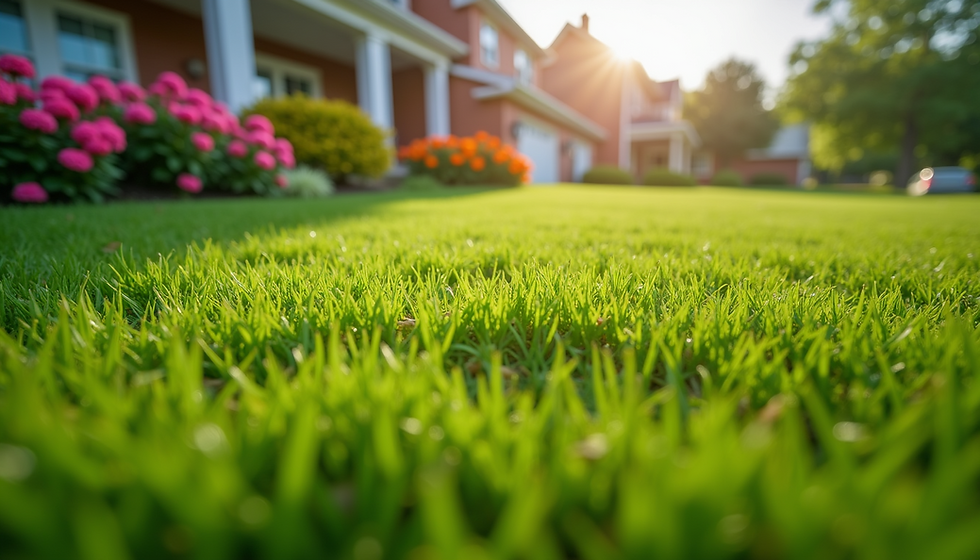The Importance of Watering Plants During a Drought
- Timothy Jacobs
- Sep 16
- 3 min read
Droughts pose significant challenges for gardeners and plant enthusiasts alike. With scant rainfall and soaring temperatures, the moisture in the soil evaporates quickly, endangering plant health. Watering during a drought is not just helpful; it is critical for the survival of many plants. In this post, we will delve into why watering is essential during drought conditions, explore best watering practices, and highlight the long-term advantages of keeping plants healthy when the weather turns dry.
Understanding Drought Conditions
Drought occurs when there is a prolonged shortage of rainfall, impacting agriculture, ecosystems, and urban landscapes. According to the National Drought Mitigation Center, roughly 90% of the continental United States experienced some level of drought in 2021. During these dry times, soil loses moisture at an alarming rate, making it challenging for plants to absorb the necessary water to thrive.
When plants face water scarcity, they can suffer stress. Indications of drought stress include wilting, yellowing leaves, and leaf drop. For instance, while a drought may only last a few weeks, even a short period of low water supply can lead to long-lasting damage.
The Role of Watering in Plant Survival
Watering during drought conditions is crucial for several reasons. Firstly, it sustains plant life. Although some plants have drought-resistant traits, many need regular watering. For example, vegetables, annuals, and young trees require consistent moisture to survive and flourish. Offering water is akin to providing a lifeline, allowing plants to engage in critical processes like photosynthesis.
In addition to sustaining life, watering helps maintain soil structure. Dry soil compacts easily, making it hard for roots to grow deep and absorb nutrients. By watering regularly, you keep the soil loose and aerated, which promotes healthier root development. Research shows that plants with well-aerated roots can absorb up to 25% more nutrients, enhancing their overall health.
Best Practices for Watering During a Drought
When watering during a drought, keep the following best practices in mind:
1. Water Deeply and Infrequently
Instead of shallow, frequent watering, aim for deep watering sessions spaced a week apart. Aiming for about one inch of water per week encourages roots to extend deeper into the soil. For instance, if you have a vegetable garden, providing one inch of water weekly can yield a more robust crop, since roots will search for moisture.
2. Water Early or Late in the Day
To curb evaporation, water your plants early in the morning or during the evening. This timing allows water to soak into the soil more effectively, ensuring that plants receive the hydration they need to thrive.
3. Use Mulch
Applying mulch around your plants is a simple yet effective way to conserve soil moisture. Mulch acts as a protective barrier, reducing evaporation and stabilizing soil temperature. For example, organic mulches like wood chips or straw improve soil quality as they break down over time, providing nutrients.
4. Collect Rainwater
If feasible, set up a rainwater collection system. This sustainable source not only reduces reliance on municipal water but often contains fewer chemicals than tap water. Studies show that plants watered with rainwater exhibit improved growth compared to those watered with typical household water.
5. Prioritize Your Plants
During drought conditions, it may not be possible to water every plant equally. Focus on your most valuable or vulnerable plants, like young seedlings, fruit-bearing plants, or those sensitive to dry conditions. For example, a well-established tomato plant might withstand drought better than a newly planted herb.
The Long-Term Benefits of Watering
Though it may seem counterintuitive to water during a drought, the long-term advantages greatly outweigh any immediate drawbacks. Healthy plants are typically more resilient and better prepared to endure future droughts. By investing in their health now, you are safeguarding your garden's longevity.
Additionally, watering during drought helps support local ecosystems. Many plants offer vital habitats for various wildlife, and their survival is fundamental to preserving biodiversity. By ensuring these plants remain healthy, you contribute to the overall well-being of your local environment.
Taking Action to Protect Your Green Space
Watering plants during drought conditions is vital not just for survival but also for maintaining a thriving ecosystem. By grasping the significance of watering, implementing effective strategies, and recognizing long-term benefits, gardeners can make informed decisions that enable their plants to flourish, even under difficult circumstances.
As drought occurrences increase due to climate change, adopting sustainable watering practices has never been more crucial. This commitment ensures that our gardens stay vibrant and resilient, playing a part in nurturing a healthier planet for generations to come.










Comments